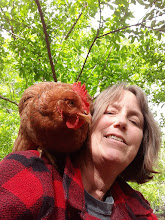The purpose this week is:
To introduce the children to lapbooking, in case they aren't familiar with it.
To introduce them to animal habitats.
Vocabulary to go over with the children:
Habitat- a habitat is a place where animals naturally live.
examples,
A very small habitat is an ant farm, a tree in your yard or a hamster in a cage. Some large habitats are the ocean and the rainforest. A habitat should have enough food, shelter, water and space for everyone who lives there.
Biome-a major ecological community type (as tropical rain forest, grassland, or desert). In other words a Biome is a large Habitat.
Ecosystem-An ecosystem is a community of living and non-living elements and their relationships to each other.
At times you may hear the words Habitat, Biome or Ecosystem used to mean the same thing.
To make a nature notebook with which the children may draw, write about add photos or postcards of any animals they have seen through the year.
Examples. Child goes to the zoo they may add pictures of the zoo animals. Child goes on vacation to Australia or a relative sends a postcard from there, the child may wish to add photos or the postcard and a story about this. Child finds a toad in the backyard and keeps it for awhile to observe, child may wish to take a photo or draw a picture of the toad and write a few words about it.
Lesson 1:
Reading:
Animal Habitats a Williamson Little Hands Book by Judy Press ISBN 0-8249-6778-x
Read aloud pages 5-6 A Habitat Is A Home. Discuss the questions on page 6.
Discuss the vocabulary words above, make sure child understands what a habitat is.
Activity:
Make a nature notebook. I ordered pre-made kits for simplicity in a large group but it could easily be made by the child in their own unique way. The kit I have has two 8x10 foam sheets which have been 3 hole punched for the front and back cover, about 20 pages of 3 hole punched paper for the notebook, strings to tie the covers to the papers and an assortment of foam decorations such as a bug jar, some bugs and the words nature notebook.
Discuss with the child what the nature notebook might be used for. To draw insects and wildlife they see in their own yard, to write a story about an elephant at the zoo, to paste a postcard with a Kangaroo on it that Auntie sent from Australia. etc...
Lapbook:
For this lapbook use just one file folder without any special folds, it will be used as-is.
Cover:
Write Animal Habitats, have the child decorate in any way they wish- suggestions, draw a scene of an animal in its habitat, print out some clip art or use animal stickers
Inside left glue these three items:
Graphic one
Biomes from Homeschool Share (click Biomes for the printable) assemble this layered book, have child draw picture of each biome on its own page.
Graphic two
Clipboard from homeschool share on the clipboard write or type for your child:
A Habitat is a place where plants and animals naturally live.
Large Habitats are also called Biomes and Ecosystems.
An example of a small habitat is a hamster in a cage or a tree in your yard.
Some types of large habitats or biomes are forests and oceans.
Graphic three
library pocket printed on cardstock or make an envelope you have into a library pocket. One library pocket to print is at homeschoolshare.
In graphic three you will put cards about some habitats.
See page 145 of the Giant Science Resource Book by Evan-Moor ISBN: 978-1557996961
Have child cut out the 6 pictures and color them then place them into the library pocket.
Inside file folder right side we will glue an activity: Find the habitat.
This is from the book Habitats by Evan-Moor ISBN978-1557996886 on page 9. have child do this activity.
Back cover of file folder write at the top; My Favorite Animal is:
Have child draw their favorite animal on the back and try to guess where it lives. Answers will vary.
Extra for big kids!
Reading
Kids Easy To Create Wildlife Habitats by Emily Stetson ISBN 0824986652
Read pages 5-9 then put together your own Wildlife Sleuthing kit as described on page 9. You have already made a nature notebook in this lesson which can go with your kit.
Subscribe to:
Post Comments (Atom)

No comments:
Post a Comment